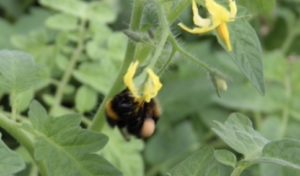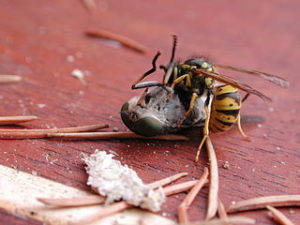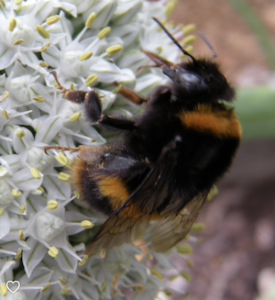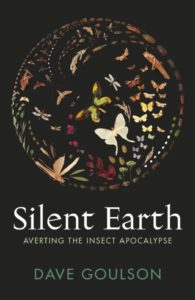Prof Dave Goulson’s new book ‘Silent Earth’- My Review
How do you write a review of a book that is packed full of so many facts, which as an environmentalist myself, I find interesting and to be honest, worrying? It is a powerhouse of information. So I decided to go back to basics and use memories, facts, photos and a film to emphasise how detailed this book is. I could have added more photos, films etc. but then this is a review not a chapter in a book!
Silent Spring
I remember hearing some talk about a book called ‘Silent Spring’ by Rachel Carson at some environmental meeting I attended and I remember hearing that birds of prey, like sparrowhawks, were declining due to DDT. It was only many years later in my mid-40s that I read it whilst at university studying for an MSc in Countryside Management. Although the book was rather easy to read, and although angry, that anger was very subtly written into her little ‘stories’ even though it had a terrifying message. In essence, pesticides/fertilisers were killing the earth just to satisfy big chemical businesses. Over 60 years after her publication I watch as local council employees spray a few ‘weeds’ on a strip of roadway and wonder have we not learnt anything?
A lot has happened since the 1960s when it was written. The environment has been top of the list for many more people, though unfortunately, I suspect still a minority. Today numerous environmental groups have developed and evolved and there is much more environmental awareness than ever before. Now along comes another environmental book with a very similar message to Carson’s, however with a different less subtle message, namely that insects are essential for humans. That may sound ridiculous to some people.

Bumblebee pollinating a tomato to make tomato sauce!
If the truth is known, where I lived on the outskirts of Liverpool city centre, back yards, outside toilets and 1000s terraced houses, there were hardly any trees, flowers, birds or wildlife. I had to keep ants and spiders and often saw those yellow slugs (Limax flavus) on the tiles on the floor of the back kitchen. What did they feed upon, where did they live? It worked for me though. Insects and slugs helped me to develop my love for and awareness of nature, in my little tiled gardenless backyard. Not lions in Africa or tigers in India. Reading ‘Silent Earth’ by Prof. Dave Goulson is a bold move with him concentrating on insects, pollinators and other little creatures. Rather than other wildlife which is so much more popular to many people. Let’s help ourselves by helping insects to thrive.
What is a pest?
Over the years I have met many people and given numerous presentations about all sorts of garden wildlife. From attendees, over the years I can draw a conclusion that many people have different views as to what constitutes a pest. To some, it could be a slug, weed, worm, or rodent, to others it could be a tree, plant, spider, woodlice, bird or insect. Whatever organism they perceived as a pest we, as humans were excluded from that list. As if every other organism has been put here to be beneficial or of some good for humankind! Hm! What good are wasps? A common question I am often asked by many people when giving a presentation about wildlife gardening. Ok. How do you feel about dung flies and dung beetles? Both of these break down dung pats. Read how dung beetles via the Australian Dung Beetle Project, were introduced to tackle large areas of grasslands in Australia being smothered in solid cowpats reducing areas available to sustain livestock. Little stories like this are woven into the book, making not only interesting reading but help to give the reader a more informed overview as to how all the little creatures play a part in the complex web of life.

Wasp about to butcher up a horsefly for its larval sisters back at the nest
A common wasp (Vespula vulgaris) captures a horsefly, which it will chop up and feed to its larvae © Robert Goossens via Wikimedia Commons (CC BY-SA 3.0)
What good are wasps?
So let’s use it as an example, although I know I am probably backing a loser here using wasps! Goulson states that they are voracious predators of crop pests such as certain caterpillars and aphids. They are pollinators for some wildflowers. Even they are also food themselves for other larger wasps, spiders and more. Read this by another Prof – Adam Hart. If you haven’t the time, in a nutshell, they prey upon an estimated 14 million kilograms of insect prey across the UK summer. This includes the pain-inflicting horseflies! With regards to other arthropod pollinators, without them, we would be without many fruits, such as tomatoes, apples, strawberries and a raft of other berry crops, coffee and many seed-producing crops. Great article from the Natural History Museum here, What do wasps do?
Compost makers and undertakers
Even the pollinators need help from other small creatures. For example, springtails, woodlice and earthworms help to recycle decaying organic matter, leaves and the like. They incorporate it into the soil in which the seeds germinate, grow and become flowers, plants, trees etc, which we harvest the resulting crops or admire their shape, taste, colour, form, beauty and smell. It’s a whole ecological system. What about dead animals in the wild, how often do we see them anyways. Why is it not a common sight as we amble through the countryside? Well, decomposers return them to the earth. That includes natures undertakers. Yep, even those pesky blue bottles and green bottles, for example, have a positive role to play. They lay masses of eggs and the resulting maggots speedily consume the carcass before other insects come along to do the same. This book explains this to you and much more. It is thought-provoking. Dave Goulson is in essence urging us to look after our six-legged friends and other smaller ‘friends’. Believe it or not, they are beneficial to humans and we need them much more than they need us! A good place to start is in your garden. A good time is right now.

Bumblebee pollinating an onion for cheese and onion crisps?
His passion oozes out of his book. He has written over 300 academic articles/papers, quotes other such studies and translates ‘academic-speak into ‘everyday’ language mixed with his experiences, commonsense hints, tips, facts and humour, which you and I can grasp and associate with. He openly states in Part 1, “My mission in life is to persuade people to love insects, or at least to respect them for all they do”. I would have continued with “All that they do for us humans and all for free!” For me, undoubtedly he has succeeded. We know the world population is growing. But how will they be fed? They include my grandchildren and their children. We could not possibly feed the growing population without pollinators, who pollinate the food crops that provide essential vitamins and minerals. Is this not a worthy wake-up call? Ok, we could grow more wheat, rice and maize then live on bread, rice and porridge. But would we be healthy?


I have a couple of Dave Coulsons books, and heartily agree he is an excellent guide to all the wonderful little critters out there and how precious they are. I will be getting this without doubt and likely purchasing for Christmas as well. His knowledge and deep empathy for the myriad other living beings we share this planet with is a real joy. A good modern take on Carlsons ‘Silent Spring’ world. I for one believe we fulfill the criteria for a definition of vermin ourselves. We are laying to waste our astonishingly beautiful little planet. Amazingly though, there is even now just about still time to recover the worst damage. Go Greta and all those other wonderful activists putting their time, energy and safety on the line for us all.
I can live with wasps but I would be happy to never see another horsefly, ever. I could ask ‘what use is a horsefly?’ There aren’ t enough wasps around obviously!
Seriously, have you any tips on avoiding horseflies biting. I’ve tried everything.
Well, Gail, I use this stuff https://www.lessmosquito.com
You may find this BBC film interesting https://www.bbc.co.uk/news/av/uk-wales-44502725 🙂 Cheers, George NN
All Dave’s books are excellent, I’m part way through this but finding it a little depressing. Not least because I can remember fly enctrusted windscreens, moths etc etc
I live in the lakes and was commenting recently that it was a green desert but I realise now that applies to the whole country
Yes, depressing but we can all work to turn the tide, starting today Paul! Cheers George
I’m on with it George. I’ve just bought some land to extend my garden and want to make it as wildlife friendly as possible. Do you know anyone who could help with design?